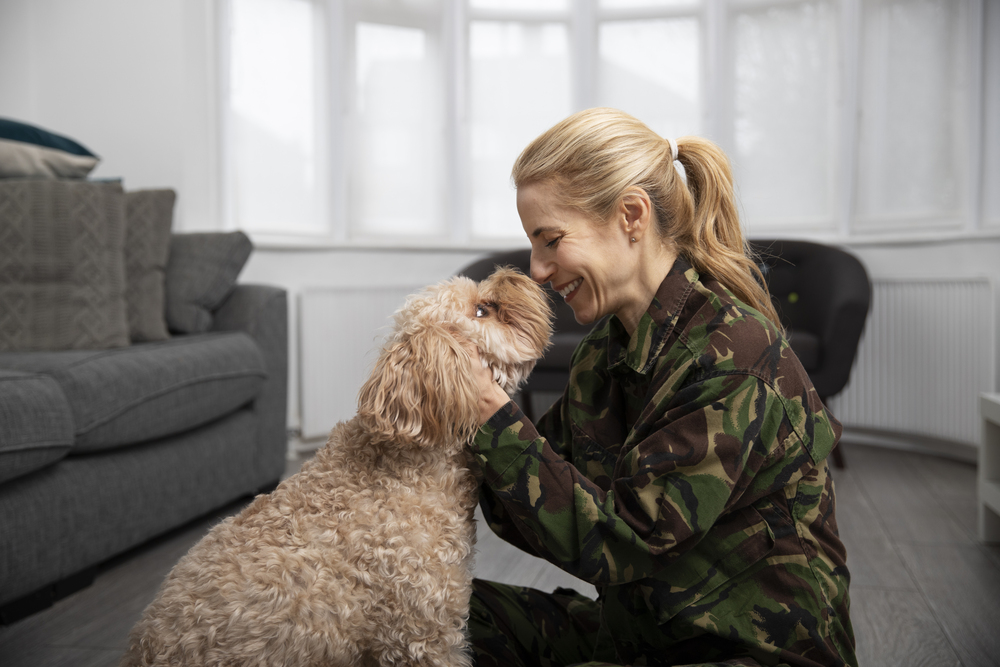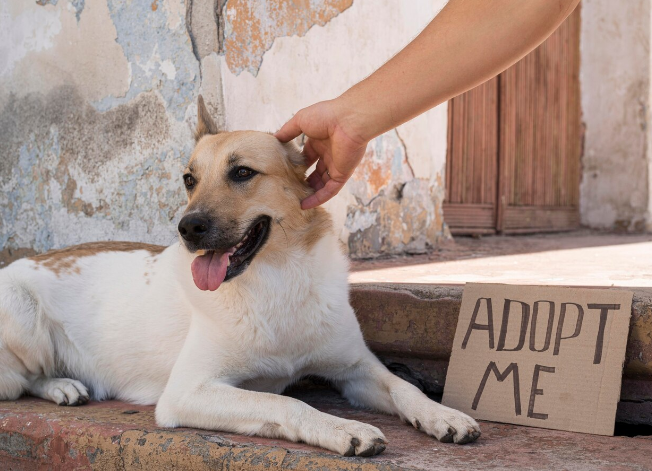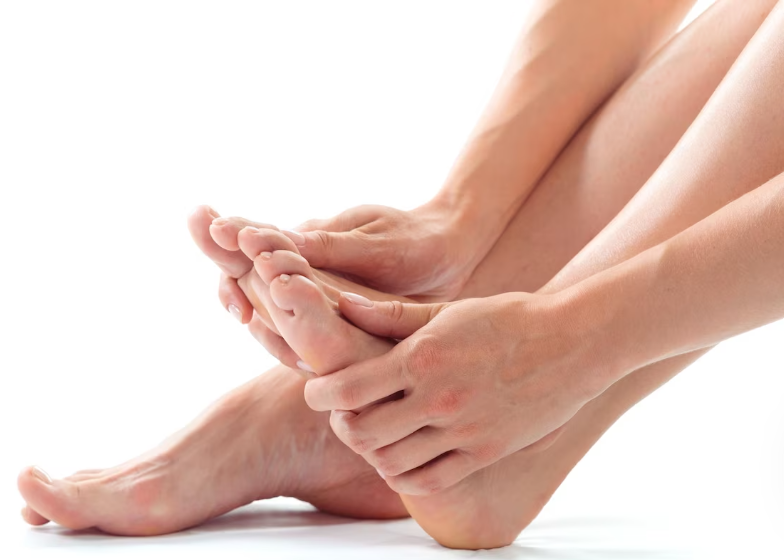
Welcoming a new puppy into your home is an exciting and joyful experience, but it also comes with its own set of challenges. As a new dog owner, you might be feeling overwhelmed with the responsibility of training your furry friend. Proper training is crucial not only for the well-being of your puppy but also for fostering a harmonious relationship between you and your new companion. In this beginner's guide to puppy training, we'll provide you with essential tips and techniques to help you navigate the early stages of training.
We will explain what you need at home for your puppy to feel comfortable, how to find out which treats motivate your dog the most, discuss Positive Reinforcement, and provide tips on socializing your puppy. Let's embark on this rewarding journey together and ensure your puppy grows into a well-behaved, confident dog.
Make Your Puppy Feel At Home
Before a puppy walks over your home’s threshold you should prepare to welcome them. This can be done by going to your local preferred pet supplies store or a big continence store that you know to have a pet section. You will want to write down what you need to buy so you do not miss anything and have to run to the store before your puppy arrives at your doorstep.
Opt for stainless steel or ceramic bowls; they are durable and easy to clean. Depending on the size of your puppy, you might want to check out this Tilted Anti Slip Ceramic Dog Bowl from Addggo as well. Consult your veterinarian for recommendations based on the breed, size, and age of your puppy. You might want to pop into our article that discusses “Is Wet Dog Food Good For Puppies?”.
Choose a bed that is appropriately sized for your puppy and easy to wash. We recommend going for a bigger bed so your puppy can grow into it if you can spare the necessary floor space. Additionally, you might want to buy one bed for your living room and one bed that can fit into a crate where your dog will spend their “alone time”.
Crate training helps with housebreaking and provides a safe space for your puppy. A playpen can give your puppy a secure area to play. We recommend opting for a hard-sided crate that is easy to clean. There are going to be accidents before your dog can go potty properly so you want to make cleaning as easy as possible. More details on the topic are discussed in our article "Crate Training Schedule - How to do it, and what do you need to know before that?".
Ensure that the collar is adjustable and has an ID tag with your contact information. This improves the chances of recovering your dog in case they get lost. Choose the collar based on the expected adult size of your dog or opt for a smaller one and then buy a new one when your dog is an adolescent and coming into adulthood. The harness should fit comfortably and preferably adjustable via straps.
Puppy Pads (also called Pee Pads) are essential for housebreaking, especially if your puppy will spend time indoors. These can be bought online and at your local store.
Provide a variety of toys for chewing, fetching, and mental stimulation. Look for durable and safe options. Food bowls where the dog has to work with their tongue to find treats are a hit with many dogs. Additionally, chewable toys with treats inside can occupy your dog for as long as the treats are dropping out of the toy. Please, make sure the toys do not have any small parts that can be potentially ingested by your puppy.
Depending on your puppy’s coat, you may need brushes, nail clippers, and puppy-safe shampoo. It is best to consult your veterinarian about proper shampoo and the kind of brushes you will need. Not all coats are the same. Some canines have double coats and some coats shed more easily than others. Owners of breeds like the Akita and Bernese Mountain Dog should carefully groom their loved paw partners. If you have a floppy-eared angel at home you will want to check our article “When and How to Clean Your Dog’s Ears?”.
Be prepared for accidents with enzyme cleaners that effectively remove pet stains and odors. We can recommend the Simple Solution Extreme Pet Stain and Odour Remover for spots that seem hard to remove. If your puppy has had an accident on your carpet we recommend using the Rocco & Roxie Supply Co. Stain & Odor Eliminator. As a responsible pet owner, you should think about having a first aid kit for your pet at home. A first aid kit can go a long way if there is an emergency and your loved paw friend needs help. You can find out what you need by reading our article on the topic “Dog First Aid Kit”.
Make Your Day Predictable
Once the puppy arrives at your home you have to make a schedule for their meals, walks, grooming sessions, and crate training. It is vital to stick to the schedule so you can build a routine for your dog. Making the day predictable for your four-legged partner will ensure your success in training them to go potty outside and avoid using your carpet and floor to relieve themselves. This might be the biggest challenge for your comfortable cohabitation at first. This is why we recommend you refer to our comprehensive guide on “How to Clean Dog’s Poop Out of the Carpet”. Caring for a puppy is not all hugs, licks, nose-boops, and chasing each other at home. You have to keep it real and be prepared to clean after your dog. If you need a quick breakdown on “How to Toilet Train a Puppy in 7 Days” please check our article.
Bonding and Teaching Them Their Name
Dogs thrive on routine and can deal with separation better if they know when you will come home. The quickest way to build a bond with your dog might be playing so you might want to buy toys that you can enjoy together like rope and balls. More recommendations can be found in our article “Best Toys for Service Dogs”.
The most reliable way to begin training your dog is to teach them their name by using their food. Call out your paw friend’s name as frequently as possible when you are feeding them. Once they consistently respond to their name for meal time you can call out their name from time to time while you are at home to pet them, praise them with a loving “Good boy/girl!” and transition to using petting and your voice as motivators for your dog. Physical contact is also very important for establishing a strong bond with your dog. Bathing your dog can be a fun experience that can contribute to your developing bond. You may want to read our article on “How Often to Bathe Your Dog and How to Do It Properly?”.
Find Out Which Treats Motivate Your Dog the Most
Whenever you need to train your dog to do anything try to start in a distraction-free environment. No music, no car traffic noises, no TV playing in the background. It is best to experiment to find out what foods elicit the best reaction from your furry friend. You can do this 3-4 hours after they have had their regular meal and preferably after they have had a long walk.
Step 1: Prepare small portions of several treat types. Divide them into a few groups like this:
Group 1: small and chewy bites like kibble.
Group 2: Biscuit-type treats, can be store-bought or homemade.
Group 3: Small pieces of cooked chicken, beef, or turkey. The meat has to be boiled without any additives.
Step 2: Present two different treats at a time, one in each hand.
Step 3: See which treat your puppy chooses first. Repeat with different combinations to determine the favorite.
Pay attention to how your puppy reacts to different treats. Monitor how eagerly your puppy responds. Does their tail wag furiously? Do they become more focused? Try to read their eyes, tail, and general body movements. How quickly they eat the treat can tell you how much they like the food so keep an eye on that.
Reserve the most favored treats for training sessions to keep your puppy motivated. Do not forget to account for the treats when you prepare the food servings for your pawsome partner. Decrease the amount of food they receive at breakfast or dinner appropriately.
Positive Reinforcement – How Does it Work?
Positive reinforcement is a widely used training method that focuses on rewarding desirable behaviors to encourage their recurrence. Books like “Kristin’s Meet Me with Pawsitivity” explain the advantages of dog training through positive reinforcement in 262 pages and we will try to do this in not so many words. In the context of canine training, positive reinforcement involves giving your dog something they enjoy—such as treats, praise, or playtime—immediately after they perform a desired behavior.
Positive reinforcement is highly effective for teaching commands like sit, stay, come, and down. When your dog successfully follows a command, rewarding them reinforces the behavior. Rewarding your puppy each time they “go potty” in the appropriate spot helps them associate the behavior with positive outcomes, making house training more efficient. Instead of punishing unwanted behaviors, positive reinforcement focuses on encouraging alternative, desirable behaviors. For example, if your dog jumps on guests, you can tell them to “Sit” and if the dog complies with the command you immediately reward them.
For shy or anxious dogs, positive reinforcement can build confidence. Rewarding them for small steps toward overcoming fears can gradually help them become more comfortable. This training technique fosters trust and cooperation as opposed to Negative Reinforcement and punishment where we teach the dog what we do not want them to do and instill fear and anxiety in them.
Historically, pet dogs were trained using mainly negative reinforcement or punishment, but positive reinforcement using rewards has recently become more popular. Research like “Dog training methods: their use, effectiveness, and interaction with behavior and welfare” published online by Cambridge University Press on January 11th, 2023 suggests that Positive Reinforcement Training has more to do with the dog’s welfare than it being the best training methodology.
Positive reinforcement makes learning a positive experience, increasing the likelihood that the behavior will be repeated. Dogs trained with positive reinforcement are typically more eager and enthusiastic as observed by our teams. The canines in training enjoy the training process because it is associated with positive outcomes. Unlike punishment-based methods, positive reinforcement does not instill fear or anxiety. This leads to a more relaxed and happy dog, which is crucial for overall well-being as supported by research titled “Does training method matter? Evidence for the negative impact of aversive-based methods on companion dog welfare” published in the PLOS ONE Journal on December 16th, 2020.
Socializing a Puppy
Starting early and gradually is your best bet at shaping your young canine into a confident, well-mannered, friendly, and patient adult. Please, keep in mind that dogs, just like people, can be moody and have temperaments. Even if Golden Retrievers are famous for generally being patient, friendly, and loving that does not mean that you should approach every GR with caution thrown to the wind.
The critical period for socialization in puppies is between 3 and 14 weeks of age. During this time, puppies are more open to new experiences and less likely to develop fear responses. Introduce your puppy to a variety of environments, people, animals, sounds, and experiences gradually. Make sure they are properly vaccinated so their immune system can deal with potential pathogens.
Start with low-stress situations and progressively expose the dog to more stimuli. You can invite friends, family, and colleagues for a coffee at home so your puppy can meet them in a controlled and safe environment. Additionally, you can set up play meetings with dogs owned by your friends and family. Monitor your dog's reaction and playtime and intervene if you see that they are not doing well. Reward them with pets and a loving “Good boy/girl!” as long as they are playing well with other animals. Take them to your local dog park when the veterinarian says it is safe for them to visit. Each puppy is unique and may have different comfort levels with new experiences. Pushing a puppy too quickly can lead to fear and anxiety so keep your eyes peeled for worrisome body language. Signs of stress include:
- Cowering (the tail is tucked behind the hind legs and the ears are sloped on the sides of the head);
- Excessive panting and whining;
- Repeated lip licking or tongue flicking, especially when not eating, can be a sign of stress;
- Walking back and forth repeatedly can be a sign of anxiety;
- Dogs may yawn excessively when they are anxious or stressed;
- Attempting to hide and trembling.
If your puppy shows signs of discomfort, slow down the socialization process and provide comfort and reassurance through physical contact, giving them tasty treats, and taking them to a safe spot. Gradually reintroduce the experience at a later time.
We encourage you to keep learning by reading our articles:
- “Puppy Socialization Checklist”
- “Puppy Training Schedule by Age”
- "The Ultimate Guide to Choosing the Right Puppy Training Program"
- "Puppy Basic Obedience 101"
- "How To Train Your Dog to Walk On a Leash"











